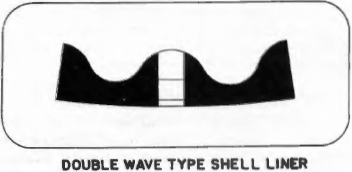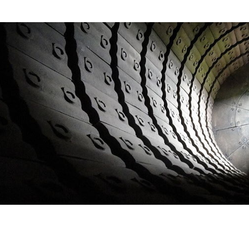Since downtime is a critical factor, especially when a mine relies on a single large mill for its primary crushing, the focus is on keeping a pass as short as possible. According to RME, its top-notch filling handler, a twin eight-axis milling machine, has reduced the time required by about three-quarters for large mills, representing significant cost savings. Go for the ball mill liners there and have the perfect solutions.
- The company’s product line ranges from its Millmast system, which is designed for use in smaller mills and can handle fill segments of up to 400 kg in weight, to the double eight-axis machine, capable of handling segments of up to 10 tm. The ability to safely and accurately maneuver fill parts of this size has had consequences in terms of fill design, as fewer and larger segments are now required.
Speaking at an export award ceremony in 2008, RME Executive Director John Russell said his mill liner system has removed all limitation on the size of the liner. RME’s Thunderbolt recoilless hammer can knock down any remaining filler, and a mill milling machine can coat any size with millimeter precision required to easily install the liner bolts. A 5-ton liner installs as fast as a 1-ton liner, and replaces the four additional installation maneuvers, emphasizing the benefits of now being able to use larger individual infill segments.

Manufacturers’ Point of View
Eric Herbst, international sales manager for coating manufacturer based in the US, said from the coating supplier’s point of view that there is an emphasis on continuing to develop processes, alloys, designs and wear tracking. Especially, he added, alloy development is an existing part of the company’s business, and one of its main R&D (research and development) focus.
Most of our customers are extremely interested in trying new alloys in their mills, because when we are ready to test an alloy, there is a very good chance that our customers will benefit, said Herbst. For example, we have recently developed a new alloy for high impact applications such as SAG mills that has increased the durability of our customers’ coatings by up to 20% compared to the alloys that are currently being used in those applications.
We continue to continuously optimize our customers’ coating designs. This is an interactive process where we make increasing improvements to the liner design over time. A constant presence on the ground during arrests is an extremely important part of this process.
A typical 38-foot SAG mill today has 50% of the number of castings compared to five years ago. Fewer castings to install means minimizing downtime, at the same time, the castings are lasting longer, further reducing mill downtime.
According to ME Elecmetal, an important aspect of the optimization process is having a very good understanding of how a given coating is wearing out. The industry has developed a web-based application that tracks the wear and performance of hull liners. We chose to focus on the case coatings initially, as these generally have the highest consumption and use of any coating in the mill. The application stores wear profiles and operational parameters of the mill, and analyze the wear and performance of the coatings.
The general idea that emerges, however, is that the selection of the coating is a team effort, and not a single person. Too many factors are at stake to take the risk, so by taking a holistic approach, mill operators can better optimize their overall performance and thus mine profitability.

